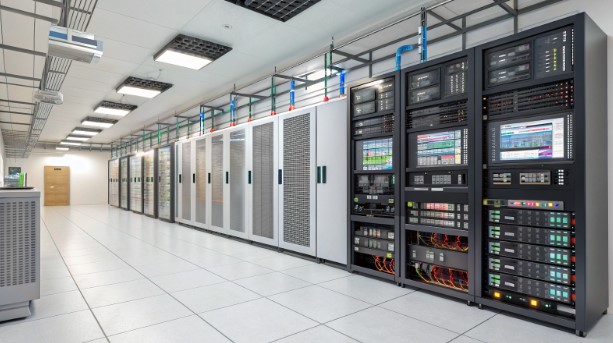Fully Managed Dedicated Server: Performance & Reliability

In today’s digital landscape, managed dedicated servers represent the backbone of enterprise infrastructure, offering unparalleled performance and reliability for mission-critical applications. As businesses increasingly rely on robust hosting solutions, understanding the nuances of managed dedicated environments becomes crucial for tech professionals and system architects.
Core Advantages of Managed Dedicated Servers
Unlike shared hosting environments, managed dedicated servers provide exclusive hardware resources, ensuring consistent performance without the “noisy neighbor” effect. The architecture delivers bare-metal performance with enterprise-grade hardware, including latest-generation Intel Xeon processors and NVMe storage systems. This dedicated infrastructure translates to microsecond-level response times and guaranteed resource availability.
Performance Architecture Deep Dive
Let’s examine the technical specifications that define a high-performance managed server environment:
- CPU: Dual Intel Xeon Scalable processors with up to 28 cores per socket
- Memory: ECC DDR4 RAM configurations up to 256GB
- Storage: NVMe SSDs in RAID configurations with throughput up to 7000MB/s
- Network: 40Gbps interfaces with redundant connectivity
Reliability Engineering & Infrastructure
Enterprise-grade reliability requires sophisticated engineering approaches. Modern managed dedicated environments implement N+1 redundancy across critical components, achieving 99.995% uptime through distributed systems architecture. Key reliability features include:
- Power infrastructure: 2N redundant UPS systems with automated failover
- Cooling: Computer Room Air Conditioning (CRAC) units with hot/cold aisle containment
- Network: BGP routing with multiple tier-1 providers
- Hardware: Out-of-band management via IPMI 2.0
Performance Optimization Techniques
System architects implement multiple layers of performance optimization in managed environments:
- Kernel-level tuning (sysctls, I/O schedulers)
- TCP stack optimization (BBR congestion control, buffer sizes)
- File system selection and configuration (XFS, ext4 with optimal mount options)
- Hardware-level optimizations (CPU frequency scaling, NUMA awareness)
Application Deployment Scenarios
High-performance managed servers excel in specific use cases:
- Real-time data processing pipelines
- High-frequency trading platforms
- Machine learning inference systems
- Content delivery networks
Each scenario benefits from bare-metal performance combined with professional management, enabling teams to focus on application development rather than infrastructure maintenance.
Security Architecture
Enterprise security implementation includes:
- DDoS mitigation with up to 100 Gbps protection
- Hardware-level security with Intel SGX support
- IDPS systems with real-time threat detection
- Regular penetration testing and vulnerability scanning
Cost-Benefit Analysis & TCO Considerations
When evaluating managed dedicated solutions, technical decision-makers should consider these metrics:
- Initial CapEx vs OpEx distribution
- Mean Time Between Failures (MTBF)
- Mean Time To Recovery (MTTR)
- Total Cost of Ownership (TCO) calculations
Enterprise-grade managed servers typically demonstrate ROI through:
- Reduced internal IT overhead (average 30% reduction)
- Improved application performance (40-60% latency reduction)
- Enhanced security posture (75% reduction in incident response time)
- Scalability on demand (deployment time reduced by 85%)
Technical Selection Criteria
System architects should evaluate these technical parameters:
| Component | Minimum Specification | Recommended Specification |
|---|---|---|
| CPU | Intel Xeon Silver | Intel Xeon Gold/Platinum |
| Memory | 64GB ECC DDR4 | 128GB+ ECC DDR4 |
| Storage | Enterprise SSD | NVMe Arrays |
| Network | 10Gbps | 40Gbps |
Monitoring & Management Protocols
Enterprise monitoring systems implement:
- Prometheus-based metrics collection
- Grafana dashboards for visualization
- ELK stack for log analysis
- Custom alerting thresholds
Deployment Best Practices
Enterprise deployment protocols typically follow infrastructure-as-code principles:
- Automated provisioning through API endpoints
- Configuration management via Ansible/Chef
- Version-controlled infrastructure definitions
- Immutable infrastructure patterns
Troubleshooting & Support Architecture
Enterprise support follows ITIL frameworks with defined escalation paths:
- L1: Initial response team (15-minute response SLA)
- L2: Technical specialists (hardware/network)
- L3: System architects and engineers
- L4: Vendor escalation channels
Future-Proofing Considerations
Technical architects should consider these emerging trends:
- ARM-based server architectures
- Composable infrastructure
- Edge computing integration
- AI/ML acceleration support
Conclusion
Managed dedicated servers represent a critical infrastructure choice for enterprises requiring peak performance and reliability. The combination of bare-metal performance, professional management, and enterprise-grade reliability creates an optimal environment for mission-critical applications. When evaluating managed dedicated hosting solutions, technical decision-makers should consider the comprehensive feature set, support infrastructure, and long-term scalability options.
For system architects and technical professionals seeking high-performance infrastructure, managed dedicated servers provide the ideal balance of control, performance, and reliability. The investment in enterprise-grade managed hosting continues to deliver measurable benefits in terms of performance, security, and operational efficiency.

